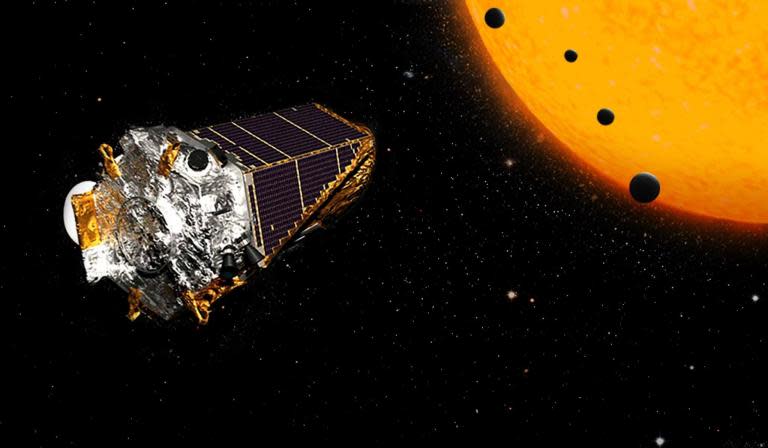Artificially intelligent machine becomes one of world’s most famous new astronomers with Nasa solar system discovery
Nasa researchers have found the first ever solar system that's filled with eight planets like ours, 2,500 lightyears away.
But it might be the way it was discovered that's really astounding. It wasn't found by an astronomer, but by an artificially intelligent computer program built by Google.
The research has led to hopes that AI can be used across astronomy to identify new planets and other discoveries with vastly increased speed. It's likely to find many more exoplanets from now on, say scientists, filling up solar systems and the universe with previously hidden worlds.
It was a Google neural network – a computer that can learn like a person – that first spotted the breakthrough planets and alerted its human owners.
The neural network works by being fed a whole host of information – in this case planets and other objects, spotted by the planet-hunting Kepler space telescope. It can learn the differences between those things, allowing it to come to be able to distinguish between something of interest to Nasa and something that isn't.
Now it can do that work all by itself, and with 96 per cent accuracy, according to Nasa. It was that process that allowed the Google AI – which hasn't yet been named – to spot the two planets deep in space.
It did so by combing through data sent down by the Kepler space telescope, which was launched into space by Nasa in 2009. That telescope looks out at the stars and watches for how bright they are – if they temporarily dim, then it may be a sign that a planet is passing in front of it, and by watching the patterns in the dimming astronomers can work out great detail about far distant planets.
The software's neural network was given data about 670 stars. In there, it found the two new planets: Kepler 80g and Kepler 90i.
It is the latter – a scorched, rocky world that's 30 per cent bigger than Earth – that became the eighth planet to be seen in its solar system, bringing it to the same number as our own.
"As the application of neutral networks to Kepler data matures, who knows what might be discovered," said Jessie Dotson, a NASA project scientist for the Kepler space telescope. "I'm on the edge of my seat."
Christopher Shallue, an artificial intelligence researcher at Google, and Andrew Vanderburg, an astronomer at the University of Texas at Austin, said they plan to continue their work by analyzing Kepler data on more than 150,000 other stars.
Though machine learning has been put to use across various industries, it's thought this is the first time that any artificial intelligence has found an exoplanet. There has been little exploration of using the technology in astronomy at all.
"In my spare time, I started Googling for 'finding exoplanets with large data sets' and found out about the Kepler mission and the huge data set available," he said. "Machine learning really shines in situations where there is so much data that humans can't search it for themselves."
There are still limits to what such neural nets can do. They are excellent at spotting patterns and things they've already seen, and can do so with not just incredible speed but super-human accuracy; if they're shown something new, however, they can do very little with it.
That means, for instance, that they can only be used for astronomy in cases like Kepler where scientists have a huge set of planets and stars that have been confirmed. Those confirmations can be fed into the system and it can look for some of the same patterns.



